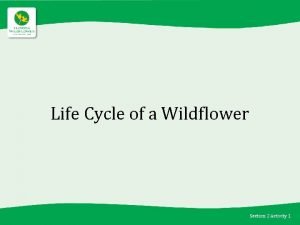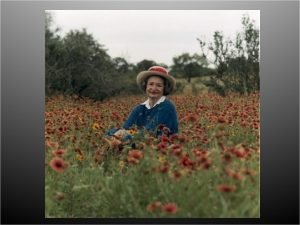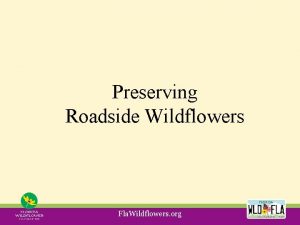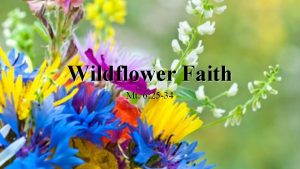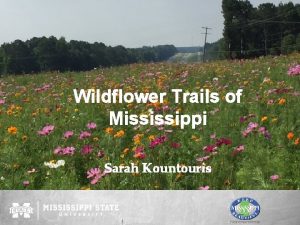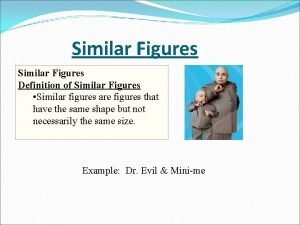WILDFLOWERS Chapter 13 Wildflower Facts and Figures More








- Slides: 8

WILDFLOWERS Chapter 13

Wildflower Facts and Figures • More than 150, 000 species of flowering plants (angiosperms) • Wildflowers grow naturally without human help • Wildflowers serve as food for many wildlife species, especially the stems and leaves • Bright colored flowers are to attract the pollinators • Nectar is a sugary fluid used to also attract pollinators which serves as food for the pollinator • Some animals, such as bees, use the nectar to make food (honey)

Fruit and Seeds • Fruit contains the seeds • Fruit encourages animals to eat so seeds are dispersed with feces • Other methods of seed dispersal include wind, clinging to animals (sandspurs, beggar lice, etc. ), seed burial (acorns by squirrels), moving water carries seeds

Cover • Flowering plants often provide cover for animals • Birds often use plants for nesting cover • Vegetation also provides escape cover

Other Benefits • Vegetation holds the soil in place preventing erosion • Plants help clean the environment (plants remove carbon dioxide which causes global warming) • Some plants can remove heavy metals from the soil • Many plants have economic value (cane for fishing pole, baskets, wreaths, cotton for clothing, etc. ) • Food for humans


Growing Wildflowers • Most wildflowers are either annuals or perennials • Annuals live one growing season • Annuals sprout in the spring, grow in the summer, flower, then die before winter. • Annuals regrow each year from the seed produced the year before • Perennials continue their life span for several years from the original roots



